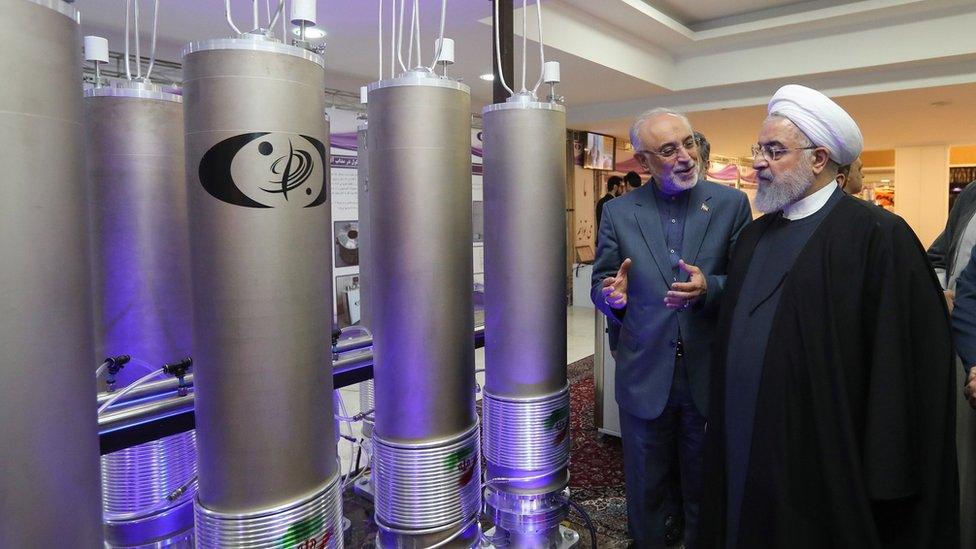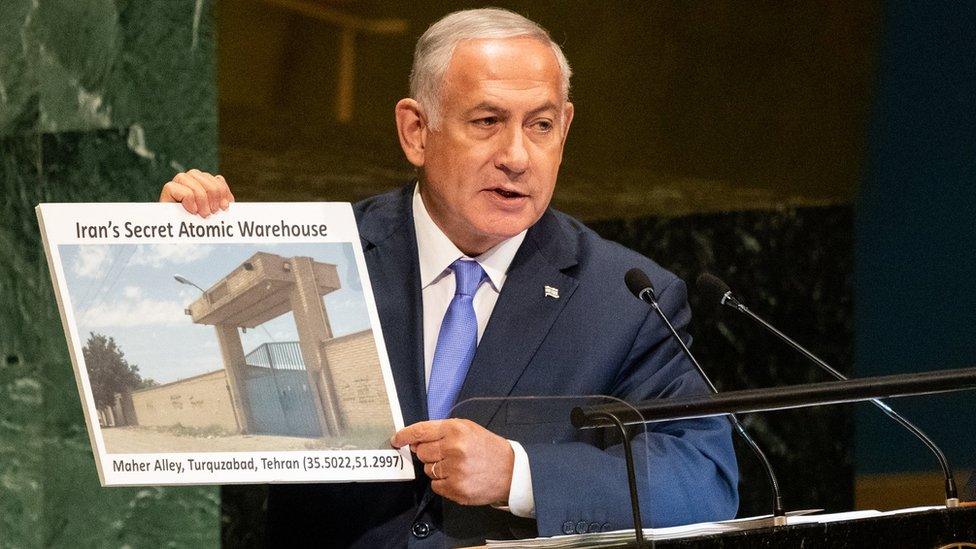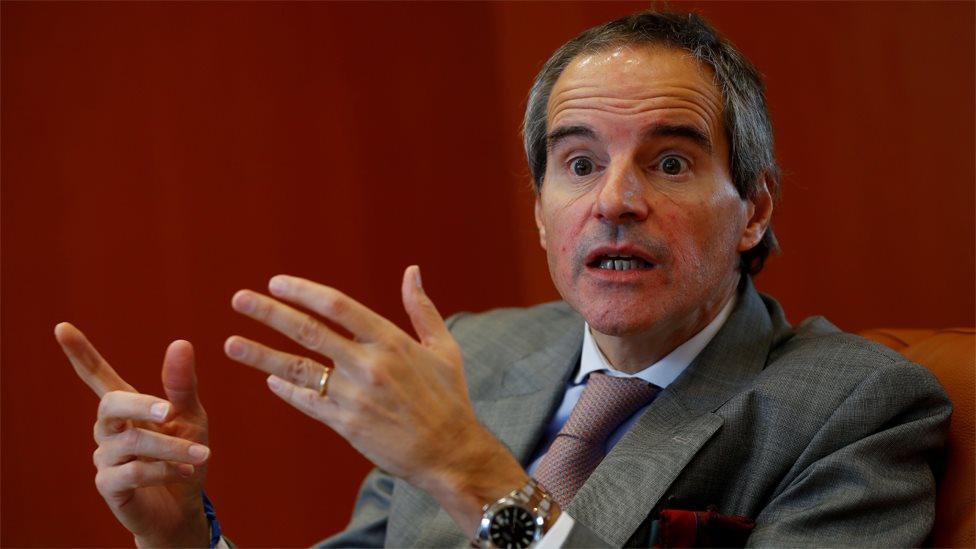IAEA 'asks Iran to explain possible nuclear activities at three sites'
- Published

Iran reportedly told the IAEA that it would "not recognise any allegation on past activities"
A global watchdog has reportedly criticised Iran for not answering questions about possible undeclared nuclear material and nuclear-related activities at three locations.
A leaked International Atomic Energy Agency document sent to member states said requests for access to two of the unidentified sites had been denied.
It is not clear what IAEA inspectors suspect might have happened at them.
But it is thought the activities took place in the early 2000s.
That is long before Iran struck a landmark deal with world powers that placed limits on its nuclear programme in return for the lifting of sanctions.
The IAEA also reportedly said on Tuesday that Iran had almost tripled its stockpile of low-enriched uranium to 1,020kg (2,249lb) since November in violation of the 2015 accord, meaning it would need only 30kg more to have the amount experts calculate it would need to produce a warhead if it chose to do so.
Low-enriched uranium - which has a concentration of between 3% and 5% of the fissile isotope U-235 - can be used to produce fuel for power plants. Weapons-grade uranium is 90% enriched or more.
Iran insists its nuclear programme is exclusively for peaceful purposes, but it has stopped abiding by a number of commitments since last year in retaliation for the US sanctions reinstated by President Donald Trump when he abandoned the deal.


The confidential IAEA report seen by journalists in Vienna on Tuesday said Iran had failed to co-operate with investigations into three sites of interest.
"Iran has not provided access to the agency to two locations... and not engaged in substantive discussions to clarify agency questions related to possible undeclared nuclear material and nuclear-related activities," Reuters news agency quoted it as saying.
"The director general calls on Iran to immediately co-operate fully with the agency, including by providing prompt access to the locations specified," it added.
The IAEA report said inspectors wanted to know whether natural uranium was used at one of the sites that they could not visit. At another site, it added, there had been activities "consistent with efforts to sanitise part of the location".

Israel's prime minister said in 2018 that Iran had a "secret atomic warehouse" in Turquzabad
Diplomats said the three sites did not include one where the IAEA said last year that inspectors had detected uranium particles of man-made origin.
The inspectors are believed to have taken samples from a location in Tehran's Turquzabad district - the area where Israeli Prime Minister Benjamin Netanyahu has alleged Iran had a "secret atomic warehouse". Iranian officials have insisted the site was merely a carpet-cleaning factory.
In an interview with AFP news agency on Tuesday, IAEA Director General Rafael Grossi demanded that Iran "give the necessary clarifications" about Turquzabad.

IAEA chief Rafael Grossi said Iran must decide co-operate in a clearer manner
"The fact that we found traces [of uranium] is very important," he said.
"That means there is the possibility of nuclear activities and material that are not under international supervision and about which we know not the origin or the intent. That worries me."
The leaked IAEA report said Iran had responded to the questions about the three sites by saying it would "not recognise any allegation on past activities".
Despite Iran's denials, evidence collected by the IAEA suggests that until 2003 the country conducted "a range of activities relevant to the development of a nuclear explosive device". Some of those activities allegedly continued until 2009.